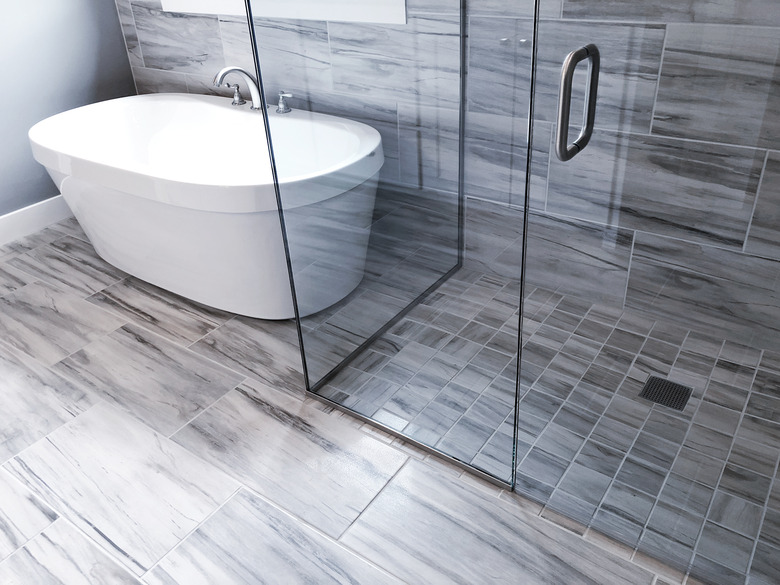How To Remove Brown Spots From Bathroom Walls
We may receive a commission on purchases made from links.
Bathroom walls are some of the most hardworking in your home. They have to deal with far higher levels of humidity, which can, in turn, leave them prone to strange marks and stains. These brown spots commonly found on bathroom walls can make a room appear dirty, dingy and uncared for, even if that really isn't the case. Knowing how to remove brown spots from your bathroom walls can help your bathroom look brand new and inviting once more.
What Are These Brown Spots?
What Are These Brown Spots?
Most of the marks found on bathroom walls are actually the beginnings of mold. The high levels of condensation in a bathroom tend to make the perfect environment for these spores to take root and flourish. Some types of mold can be quite dangerous.
If you notice black spots of mold and anyone in your household is experiencing symptoms like coughing, sore throat, rashes, stuffy nose or itchy eyes, it may be worth consulting a health professional, according to Healthline. However, if it's brown spots you're dealing with, it's likely more an issue of unsightliness than of genuine danger.
There are other signs of potential bathroom mold than simply spotting it growing. PlumbWorld encourages bathroom owners to be vigilant in terms of detecting the start of any mold growth. Other signs can be a dank, mildew scent, a general darkening of the walls overall and any unexplained damage to the walls or ceiling.
If this is the case, it's worth performing a mold-removing cleanse on your bathroom, regardless of any visible brown spots. Treating mold as soon as it appears is key in preventing it from spreading and causing lasting damage.
How to Remove Brown Spots
How to Remove Brown Spots
One of the most popular commercial cleaners to remove brown bathroom wall spots is Lysol. This cleaner comes in a handy spray bottle, which can be used to target the brown spots on your bathroom walls specifically. Simply spray the affected area, wait for a minute or two to allow the Lysol time to work, then wipe away with a wet rag.
However, some bathroom owners are less keen to introduce harsher cleaning products into their routine. If that's the case for you, there are natural methods to treat bathroom brown spots too. Zumper recommends baking soda, white vinegar and tea tree oil to treat brown mold. Baking soda or tea tree oil can be mixed with water to create a cleaning solution that can be sprayed on the affected area and wiped away. Vinegar can also be sprayed on neat to clean and remove brown spots.
If you've thoroughly cleaned your bathroom walls and are confident the mold has been treated, you may wish to tackle the brown stains left behind. If this is the case, hydrogen peroxide is an excellent way to lift color out of your walls. Make sure you follow the directions on the bottle, though, as this harsh chemical can be dangerous and is irritating to the skin.
Bathroom Wall Maintenance
Bathroom Wall Maintenance
In order to prevent future mold growth on your bathroom walls, it's important to have a routine level of maintenance set in place. One of the most important aspects of mold prevention is keeping your bathroom well-ventilated. You should leave your bathroom door and window open for at least 20 minutes after a shower or bath to allow the humidity to dissipate.
It's also important to wipe up any puddles of water quickly and to keep damp towels spread out. If you live in a particularly humid climate, it may be worth installing an extractor fan or dehumidifier to keep your bathroom mold-free.
On top of these ventilation tips, regular cleaning can help prevent mold buildup on bathroom walls. Make sure you clean your walls regularly with your favorite bathroom cleaner, and don't forget to clean the often-overlooked places, like underneath shampoo bottles. You should also consider opting for a mold-resistant paint for your bathroom walls.
